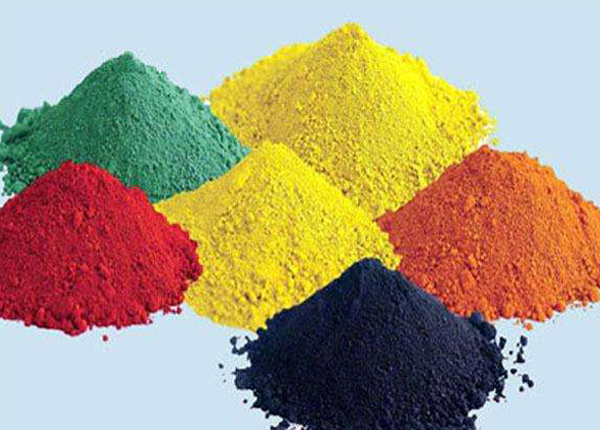Time: 2018-09-22
Source: Aoming Pigment
Read
Iron oxide pigment is widely used in many industries due to its wide color spectrum, tasteless, non-toxic and cheap. The ceramic industry is no exception. In recent years, with the development of the ceramic industry, the amount of iron oxide pigment in the ceramic industry has increased year by year. Omin pigment has increased investment and research in its field year by year, and has achieved fruitful results in application, characteristics, principle and other aspects in the field of ceramic ferric oxide.

I. application:
Ceramic products are mainly divided into architectural ceramics, sanitary ceramics, garden glass ceramics, fine art ceramics, daily ceramics, industrial ceramics, special ceramics seven categories, iron oxide pigment in these seven categories of ceramic products have a very wide range of applications.
Ii. Features and principles
Iron oxide color by the excellent coloring performance, the main use of iron oxide coloring in ceramics, the preparation of a variety of colors of glaze water, due to the price of iron ions is different, iron oxide itself is polychromatic, when adding iron oxide in other glazes, the glaze color more rich, more beautiful. Additional, in the manufacturing process of pottery and porcelain (glaze), use different burn to become atmosphere, of iron oxide show color to also differ each, below atmosphere of oxidation flame, iron oxide coloring changes with yellow arrive gong tan, turn brown with grape red again. In the reducing atmosphere, the color changes from blue to gray are the result of the dynamic balance of Fe2+ and Fe3+ in the glaze layer.
1. Application of iron oxide as raw material of the body: the body is the basic material for ceramic to ceramic.
Iron oxide is used as a colorant for the raw material of the body, which is mainly used in the wall and floor tiles of architectural ceramics. For example, the pigment preparation process of the unglazed porcelain brick in imitation granite is as follows:
Ferric oxide pigment and a small amount of blank are mixed into color paste in the ball mill, and then controlled by the quantitative pump into the mixer. In the mixer, a certain proportion of color paste and base paste are mixed into color paste at a high speed. After that, pigments and base paste are respectively sprayed into the drying tower in a certain proportion to produce color powder.
The production process formula of imitation granite unglazed porcelain brick is as follows:
Plasticity of raw materials 20-30%
British and other raw materials such as fineness 20-40%
Feldspar flux raw material 20-30%
Special pigment additives 1--5%(such as iron oxide, chromium oxide, etc.)
Due to its excellent coloring function, iron oxide becomes the main raw material for the preparation of unglazed porcelain brick color in imitation granite. The body chemical composition of yellow granite imitation porcelain brick is as follows:
SiO269%, Al2O318%, Fe2O3+TiO23%
CaO+MgO1.5%, K2O+ na2o4.5 %, burning loss 4%
In addition, some raw materials of purple sand pottery products also add iron oxide pigments to adjust the color and luster of purple sand products.
2, iron oxide in ceramic color glaze application: glaze is attached to the surface of the ceramic continuous glass layer.
In ordinary ceramics, the pigmentation of iron oxide is mainly used to make glaze water of various colors. The price of iron ion is different, and iron oxide itself presents different colors. For example, ferric oxide (Fe2O3) is red powder, and ferrous oxide (FeO) and ferric oxide (Fe3O4) are black powder.
Different iron oxides can be selected as required. Besides iron oxide itself shows polychromatic outside, when adding iron oxide in other glaze, can make glaze tonal richer, glaze color more beautiful. For example, the addition of iron oxide to a boric acid glaze containing an alkali metal gives the wine a red color. When iron oxide is added to the semi-dull and matte white glaze, it presents a series of tones of light brown, yellow-gray and camel to dark brown. When ferric oxide is used in a yellow glaze, only a few percent of ferric oxide is added to produce a strong yellow color.
Online Map (click to close)